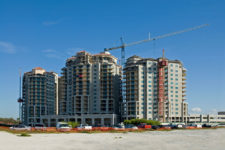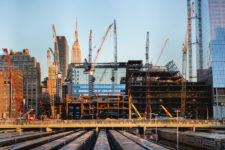A Tenant Protection Plan (TPP) is required when buildings are occupied during ongoing construction work. Here’s what you need to do to comply:
TPP Notices must be posted in occupied buildings during any construction, per Local Law 154/2017. More specifically, “for alterations of buildings in which any dwelling unit will be occupied during construction…”
Please note that there’s no distinction in this specific rule between rented dwelling units and condo or co-op units. While you should always confirm legal requirements with your attorneys, it’s likely this rule applies uniformly to all types of dwelling units under construction.
That said, if you’re not performing work (and don’t plan on doing so in the future), the TPP & TPP Notice isn’t applicable to you, for now.
There’s two documents you’ll need to be aware of:
- The Tenant Protection Plan, submitted to the Department of Buildings before work begins and available on their website
- The Notice announcing availability of the Plan, distributed to all occupied units OR posted in required locations
You must manage both documents – submitting a work and building specific TPP, and distributing/posting the DOB-approved notice – in order to stay compliant with this new rule.
Per the law, the TPP needs to include “means and methods” to safeguard the below categories, “described with particularity” and “detailed and specific.” Specific steps on how your building will comply in each area need to be listed. The law explicitly prohibits using catch-all phrases like code complaint, approved, legal, protected in accordance with law, or other similar terms.
Here’s the areas that must be included, at a minimum:
- Egress – adequate egress as required by code, and identification of the same
- Fire safety laws and controls, and any additional safety measures necessitated by construction
- Health requirements – specifically for dust and pest control, disposal of construction debris, maintenance of sanitary facilities, and limitation of noise to acceptable levels
- In addition, there must be a statement of compliance detailing means and methods of complying with lead and asbestos related laws
- Housing standards – compliance with NYC code and (where applicable) New York State code
- Structural safety
- Noise restrictions – included day of the week/hours of the day limitations set by code
- Maintaining essential services (heat, hot water, cold water, gas, electricity, etc.)
- If any disruptions are planned, means and methods to minimize the disruption plus the provision of sufficient alternatives for the above services during the disruption must be detailed
If a tenant requests a copy of the TPP itself, you must provide one. The law states “provide such occupant with a paper copy.” Once your TPP is approved by the department, you’ll want to have some on hand.
You must notify the DOB online 72 hours before work begins. Here’s the portal for submitting your notification to the Department. While no explicit fines for failing to notify the DOB have been released just yet, it’s critical to comply. With the rapid increase in construction-related enforcement, it’s more important now than ever to cross all your t’s and dot all your i’s before construction starts.
In addition to the TPP, a Safe Construction Bill of Rights must be distributed or posted. Local Law 159 gives explicit details on what should be included, and made available in both English and Spanish.




